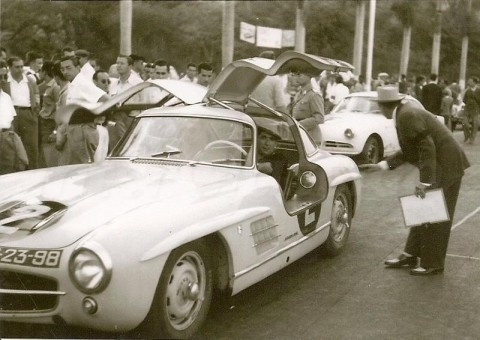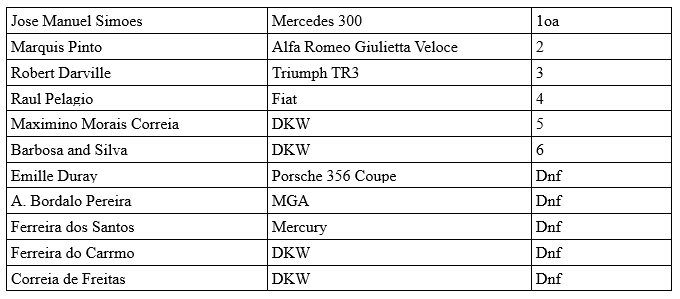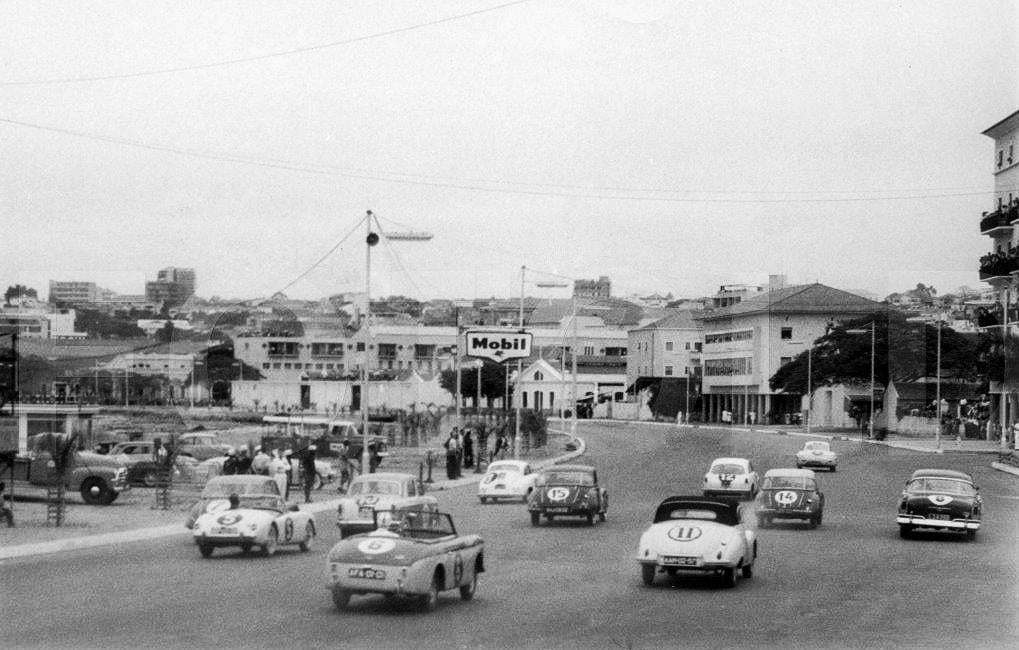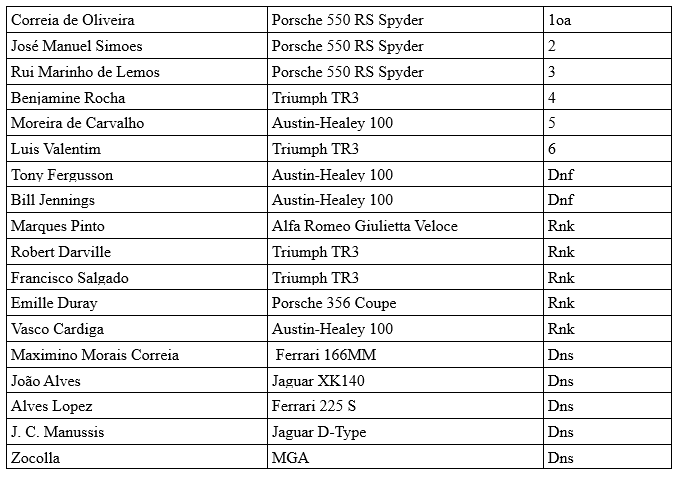In a bygone era on the African continent, when most southern African countries were colonies under the control of European powers, “Grand Prix” motor racing for sports cars flourished for a brief period of time.
One such country involved was Angola, a Portuguese colony, and it was the Portuguese government that encouraged this action as it wanted to expand motorsport in order to build a sense of unity in its empire at a time when there were signs of unrest.
 There was already thriving local motorsport in the capital of Luanda and some of the provinces. The main organization representing the sport was the Automovel e Touring Clube de Angola, with many monied members mainly connected to the tobacco and oil industries. The president of the club, Acacio Pereira de Matos, regarded as a faithful representative of motorsport in Angola, was given the responsibility of organizing the event. His position as a member of the colonial bourgeoisie and from an old family in the province linked to Norton de Matos, governor-general of Angola, stood him in good stead for the task ahead.
There was already thriving local motorsport in the capital of Luanda and some of the provinces. The main organization representing the sport was the Automovel e Touring Clube de Angola, with many monied members mainly connected to the tobacco and oil industries. The president of the club, Acacio Pereira de Matos, regarded as a faithful representative of motorsport in Angola, was given the responsibility of organizing the event. His position as a member of the colonial bourgeoisie and from an old family in the province linked to Norton de Matos, governor-general of Angola, stood him in good stead for the task ahead.
Following the example set in the Belgian Congo the previous year, the motor race was arranged to be run on a street course that measured 3.429 Km and wound its way around the streets of Luanda. It was known as the Fortaleza Circuit, with the main straight going along the Avenida Marginal.
To run in conjunction with the Grand Prix, a second race was established for mainly local drivers with cars of lesser power. This race, known as the Taca Cidade was held the day prior to the Grand Prix and produced a field of eleven cars. The race distance was substantially shorter than the Grand Prix and was won by the Portuguese driver Jose Manuel Simoes driving a Mercedes ahead of Marquis Pinto and Robert Darville. Unfortunately, the event was not covered in any depth by the newspapers in Angola, and subsequently, some information is vague.  Entries for the Grand Prix race were received from Portugal, South Africa, Mozambique, Kenya, and Belgian Congo, as well as a couple of local drivers from Angola.
Entries for the Grand Prix race were received from Portugal, South Africa, Mozambique, Kenya, and Belgian Congo, as well as a couple of local drivers from Angola.
The better-known and more established drivers turned up with Porsche 550 Spyders, transported from Portugal by TAP airline, while Austin-Healey and Triumph TRs were the choice of most other drivers. There were two Ferraris transported to Luanda from Portugal, purchased by the ATCA for the use of the two outstanding Angolan drivers, Maximino Morais Correia and Alves Lopez. The Ferrari 166MM and 225 S models had been raced in Portugal in the early 1950s but since then had languished in a garage, so were not in the best of condition to be put through their paces again.
 As far as can be established, eighteen cars were entered for the race – though only 13 starters can be accounted for. One driver, J. C. Manussis from Kenya, had an accident on his way to Luanda in the truck carrying his Jaguar D-Type and was forced to return home.
As far as can be established, eighteen cars were entered for the race – though only 13 starters can be accounted for. One driver, J. C. Manussis from Kenya, had an accident on his way to Luanda in the truck carrying his Jaguar D-Type and was forced to return home.
Practice for the Grand Prix was started on Friday at 7:00 a.m. for an hour, so as not to interfere with local business. The roads closed at mid-day for the Taca Cidade race. Within the practice time allocated, the two Ferraris were side-lined with mechanical issues, and with few spare parts and no trained Ferrari mechanics, the cars were withdrawn from the race. Likewise, both João Alves and Zocollo suffered malfunctions with their cars and failed to make the starting grid.
Portuguese driver Correira De Oliveira placed his Porsche on pole and pulled into the lead, a position he maintained until the end of the 70-lap race. Followed closely by Simoes for the first half of the race before he eased up when it became obvious to him that he could not pass, Oliveira contented himself with second place at the finish. Lemos, a navigator on TAP aircraft and part-time driver finished in the third spot. South African driver Tony Fergusson in his Austin-Healey had held the third spot but had to retire on lap 33.
 One potentially serious accident happened in the race when South African Bill Jennings, driving an Austin-Healey, skidded and climbed the curb, plowing into a pile of hay bales. Luckily for him, track marshals were on hand to rescue him. Despite the swift action of the marshals, Jennings was hospitalized for a week in Luanda to recover from his injuries. Even though he failed to finish due to his accident the race officials classified him as finishing in seventh place, based on the distance covered.
One potentially serious accident happened in the race when South African Bill Jennings, driving an Austin-Healey, skidded and climbed the curb, plowing into a pile of hay bales. Luckily for him, track marshals were on hand to rescue him. Despite the swift action of the marshals, Jennings was hospitalized for a week in Luanda to recover from his injuries. Even though he failed to finish due to his accident the race officials classified him as finishing in seventh place, based on the distance covered.


